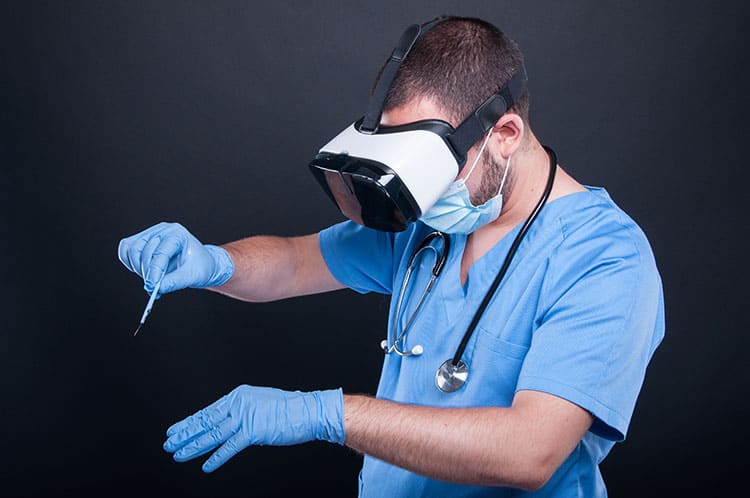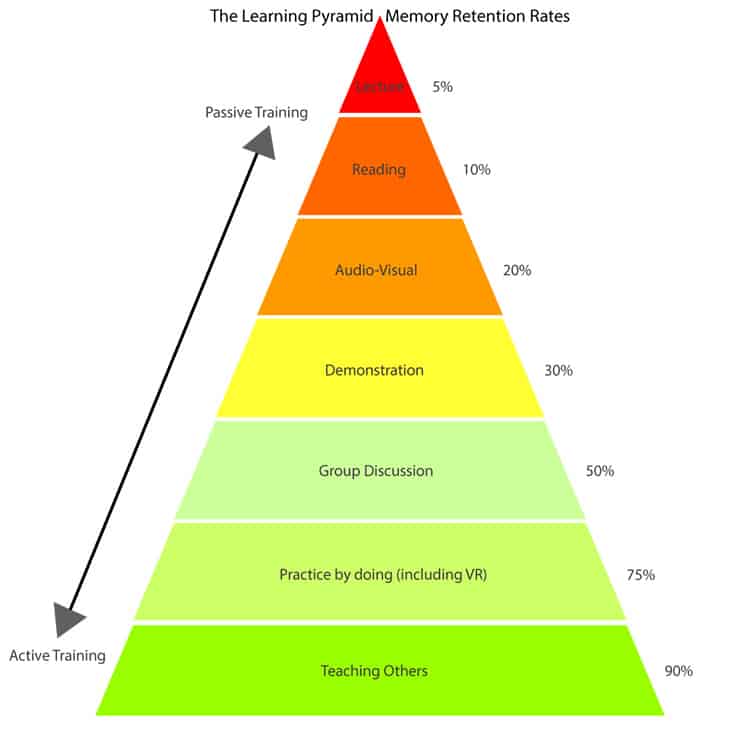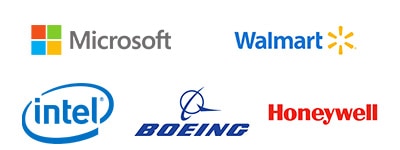Contact Form
You can email us at info@immersionvr.co.uk. Alternatively, you can fill in our contact form below and we will get back to you as soon as possible.
Virtual reality workplace training is an immersive learning experience that uses 360-degree content to immerse users into a simulated environment for training purposes. VR Headsets, headphones, and controllers are used so that the Trainee can interact with the simulated environment.
Using Virtual Reality, the user is able to experience workplace scenarios that would usually be too expensive, too dangerous, or impossible to recreate under normal circumstances. By simply putting on a VR headset, employees or trainees can experience any kind of workplace situation.

It is a safe, efficient, and highly cost-effective training solution for businesses and is being used by many industries across the globe. Healthcare, construction, retail, logistics, aerospace, transport, are all industries in which VR workplace training is being used.
VR training allows the employee to learn through practical experience which is effectively a combination of taking in information and then carrying out what is required. This provides a more memorable learning experience which has shown to improve memory and skill retention.
It allows the employee or trainee to learn by actually doing the given task which speeds up the learning process.
According to studies, ‘practical experience’ or ‘learning on the job’ is one of the best methods of learning a new skill or retaining information.

This Confucian scholar made a strong point when it comes to learning. True learning is only evident when experience produces action.
A popular learning model that had been adopted by many is called the learning pyramid. It is a group of popular learning models and representations relating different degrees of retention induced from various types of learning. Despite its criticism, the learning model has been around for many years and is further evidence of how VR can improve learning efficiency resulting in proficient workplace training.

Virtual Reality workplace training is also an immersive experience which has had many studies showing the positive effects VR has on memory retention.
It has something to do with our spatial mnemonic encoding which is our ability to spatially organise thoughts and memories.
A study (1. References) found that people also remember more information when it is presented to them in a virtual environment than they would if it were presented in a 2D format on a screen or paper.
When comparing VR training to traditional training methods, VR has a much more positive effect on memory and skill retention. One study (2. References) showed a 10-15% increase in test scores after implementing VR training for employees.
VR training is also proving to reduce the number of injuries in high consequence workplaces. One study (3 . References) found that there was 43% reduction in injury rates through VR training in high consequence workplaces.

A lot of people associate virtual reality with computer games, and it’s true that there is a lot out there in the way of VR gaming technology, however, recent findings show a surge in investment for the technology for workplace training.
Global market intelligence firm IDC predicts the market for virtual and augmented reality training will hit £52.8 billion by 2024 which from £8.7 billion in 2020 is an explosive increase (4.Reference).
The pandemic of 2020 has had a huge impact on the spending focus for businesses around the world with many interested in virtual and augmented reality technology to improve the quality of training and keep everyone safe.
Businesses of all sizes are using VR & AR technologies to educate and train new employees, streamline processes, improve communication and transfering of information and much more. Similar to designing software for computers, the possiblities are endless for how Virtual reality can be implemented.
There were an estimated 82 million virtual reality headsets in use in 2020 alone and with companies investing more than ever into VR Workplace training, we can see a bright future for the use of VR in workplace training.
Given the market value, demand and investment, It seems that VR training in the workplace is on the rise and is likely to continue as we move towards a more technologically advanced future.
We fully believe that VR training is going to transform the landscape of learning for a lot of industries moving forward. Not only is it a highly effective training method, but in a COVID-19 era where face to face contact is limited and human resources are at an all time low, we must look to harness this technology to improve the quality and safety of workplace training.

Let’s look at the difference between VR & AR so we can understand how they are both used to deliver effective workplace training.
Virtual Reality (VR) – Uses a VR headset combined with software to immerse the user inside an interactive or non interactive simulated environment. It can be used to simulate workplace environments to teach employees or trainees how to do their job in a safe and controlled environment.
Augmented Reality (AR) – Uses mobiles, tablets and AR glasses to overlay digital interactive elements onto where the user is pointing the device. Under training circumstances this can be a very good way of helping a user learn or access information. AR can be used to pull up interactive instructions and guidance, navigation, knowledge sharing and training.
The simulated environments can be created by using either software or 360 video or 360 photography.
360 VR video production places the user in the scene and allows them to explore the full 360 degrees of the recording. 360 VR photography works the same as video but uses a still image.

The interactive nature of both technologies is what makes them so successful but they do differ. To establish which training method a company will need will depend on their training goals for the company.
Let’s take a look at some of the main benefits of this type of training for business and workplace environments.
There is little risk in a simulated environment allowing your staff to experience all types of scenarios to prepare them for the real thing.
Virtual training can be used to teach technical skills such as surgery, engineering, piloting an aircraft or helicopter, firefighting, policing, rescue, operating vehicles and machinery and many more.
You can place your trainee in a potentially hazardous or dangerous workplace situation and guide them how to respond in the best possible way.
VR training is highly cost effective over traditional training methods. There is an initial cost for the software and hardware as well as the production of the training but after that you can replicate the training as much as you like.
Recent technological advances means that VR is no longer just an option for blue chip companies, VR can help businesses of all sizes.
Businesses can use these devices paired with software to train their staff remotely without the hassle of travelling. It means that a workforce could be trained from anywhere in the world.
VR training is reducing injury rates in high consequence workplaces. The simulations allow mistakes to be made without the real life consequences building confidence in the trainee through a process of trial and error or what is known as practical learning.
A study (3. References) carried out on mining companies showed that there was a 43% reduction in lost time due to injury as a result of VR training.
VR training in the workplace is a fun way to engage with your employees and give them the confidence to stay safe and learn new skills.
Results of a Walmart VR training program showed an increase in employee satisfaction by 30%
Many studies have shown the effectiveness of memory retention through Visual and interactive VR training.
Studies have shown that using VR to train employees is highly effective on test scores. Walmart implemented VR training as part of their training process and found trainees score 70% higher in tests when using VR training as part of the training.
VR Training tends to suit all types of learning styles. It’s immersive nature means that it is quite difficult to get distracted as you are completely shut off almost from reality.
VR training is an effective way to deliver remote training for your company without having to travel. Decentralising traditional training could be one solution to help business training reduce the spread of COVID-19 and reduce carbon emissions.
Let’s take a look at some of the industries that are harnessing the power of VR training to solve their business challenges.
Virtual reality in healthcare is having a huge impact on the way we are training our Surgeons, Doctors, Nurses and other healthcare professionals. Healthcare professionals are able to practice communication skills, decision making, and complex procedures in a controlled environment.
St Bartholomew’s Hospital in London is using VR technology to train staff in a range of clinical procedures. The new type of training has shown to decrease injury, increase the speed of operations and improve overall outcome for patients.
360 Video VR is also being used in the industry to allow health professionals to experience symptoms of impairment. This immersive experience can help health professionals understand and recognise symptoms and conditions more effectively.
We Are Alfred was designed to help people understand the effects of alzheimers. It uses 360 video to create a first person experience of an elderly man experiencing audiovisual age related changes.
Virtual reality training is being used in the automotive industry to improve efficiency and reduce workplace accidents.
Using 360 Video they are able to capture a work environment and create training programs allowing the industry to train employees remotely.
The training programs can be used for any number of ways but 360 video is mainly being used to help familiarise employees with places of work along with any relevant information they need to know in order to complete their job.
Audi are also using 360 video and VR as part of their dealership employee training. By recreating a sales scenario in a simulated environment, employees can learn to meet customer needs and improve car sales.
Bosch developed a proof of concept for automotive service training in 2019. The car manufacturer Ford has been one of the first to adopt this application to train technicians to service and repair vehicles without the need of any physical car or vehicle.
“The virtual reality training solution is about new technology that builds efficiency. By improving the diagnostic process, technicians are able to perform maintenance and make repairs faster and more easily.” Geof Mee, Director of operations at Bosch.
The event industry is using 360 VR videos to recreate event space which is used to train security and event staff.
The technology can be used to train lots of people remotely, increasing efficiency and reducing carbon emissions as well as an increased quality in the training delivered.
Staff are able to view the location before arrival so that they already have an idea of where they need to be going, where they will be working and all the necessary safety precautions information, for example, emergency exits, first aid kits, fire extinguishers etc.
The only downside that we can see to this type of training is the initial production costs but the long-term benefits far outweigh the initial costs for most businesses.
There is an abundance of data (see resources) out there to back the positive ROI on the technology in workplace training.
Virtual reality and 360 videos are revolutionising the way we train our emergency services. Reduced risk and increased memory retention has made VR an attractive option.
Virtual reality is being used to help the police force train police officers how to use tasers correctly. Under high stress situations, decision making can be quite a difficult task, VR allows the user to experience the situation without the risk.
VR is also being used to train firefighters how to navigate through burning buildings and how to correctly extinguish fires. Again, the VR helps firefighters to improve on their decision making under high stress situations.
Emergency services can prepare new recruits for typical situations that they may face on the field using 360 video and VR. The experience gained from Virtual reality gives new recruits the confidence to make decisions in real life situations and provides a training option that was never available before except for real life training sessions which can be expensive.
Many jobs take place at great heights and health and safety is a big part of any of these jobs. It is very difficult to gain experience in working at heights in the classroom. VR is the perfect tool to recreate working at heights.
The main benefit is having people work at heights without actually being out in the real world. You get all the experience without any of the dangers and the technology is only going to get more and more realistic. Vr is already really good at creating the feeling of falling.

Take a look at a VR workplace training project that we worked on here. We were approached by one of the largest UK rail firms to produce virtual reality training videos for their roster of train drivers. These videos would enable hazard perception and route learning training to be administered without the need of the logistical challenges of physically driving the train.
Here at Immersion VR we are specialists in VR videos for workplace training. We have produced many 360 videos training videos to help assist a range of different businesses across the Uk.
Get in touch today to find out how we can help you to produce a virtual reality workplace training solution.
You can email us at info@immersionvr.co.uk. Alternatively, you can fill in our contact form below and we will get back to you as soon as possible.